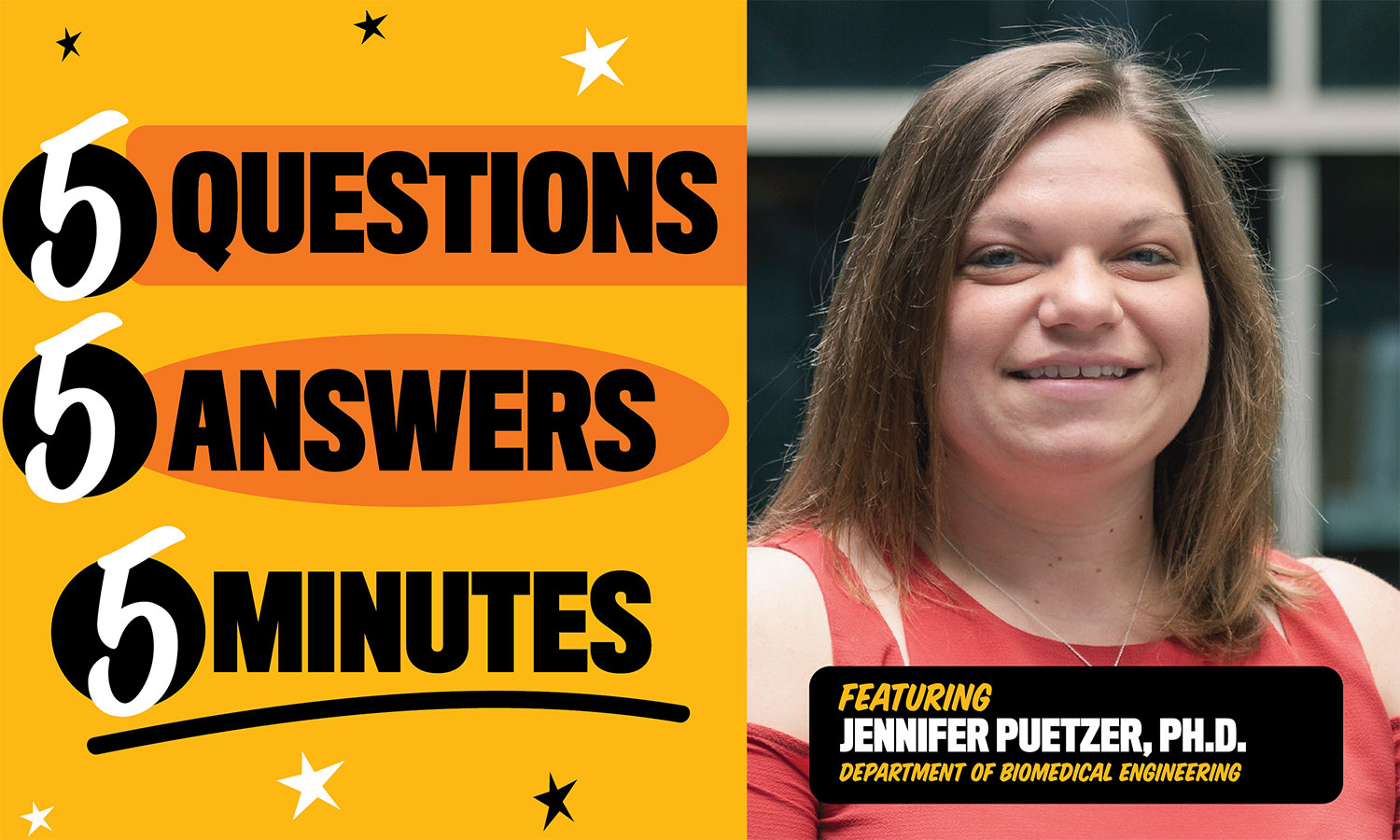Jennifer Puetzer, Ph.D., an assistant professor in the Department of Biomedical Engineering with an affiliate appointment in the Department of Orthopaedic Surgery at the VCU School of Medicine, focuses on musculoskeletal tissue engineering.
1. What are you working on right now?
Our lab focuses on creating functional meniscus, tendon and ligament replacements. These musculoskeletal tissues are composed of large collagen fibers that run the length of the tissue and provide all the strength necessary for function. Injuries disrupt these collagen fibers resulting in loss of function, pain and more than 1.6 million surgeries a year in the U.S. Currently, there is no way to recreate these fibers either in the body or in the lab. Our lab is working to better understand how cells produce these intricate collagen fibers in order to create functional replacements and drive repair in the body. Additionally, we are investigating how we can better anchor these tissues into bone for long-lasting repairs and how these tissues change with age to reduce injuries later in life.
2. How will creating these tissues make a difference?
Being able to replace musculoskeletal tissue or stimulate healing after injury will help return people of all ages back to everyday activities and sports more quickly and with less pain. Further, by adequately repairing these tissues after injury, we hope to protect patients from developing arthritis later on in life. We are also investigating how these tissues change with age so we can start to reduce musculoskeletal injuries that commonly occur later in life and sufficiently repair them to reduce the need for total joint replacements.
3. Tell us about how you’re developing this.
We have developed a culture device that guides cells to produce native-sized and organized collagen fibers. These are the largest fibers produced to date in a lab — however, they still need to get bigger and stronger to serve as replacements. So we stimulate the cells using mechanical loading similar to exercise and natural growth and feed the cells added nutrients and chemicals to further mature the tissue. We are investigating how cells from tendons, ligaments and menisci respond differently to these stimuli to better understand how cells develop the fibers and how we can better drive the collagen fiber development in the body or with stem cells.
4. What’s the biggest challenge right now?
Our biggest challenge will be moving our engineered replacements from the benchtop to the clinic. It will take years to get through clinical trials and U.S. Food and Drug Administration clearance, but we hope to determine cues along the way that can be used to stimulate the cells already in your body to redevelop the collagen fibers after injury, so there will be no need for replacements in the long run.
5. What attracted you to this work?
I grew up playing sports and with that came multiple injuries, surgeries and years of physical therapy. I developed a great appreciation for all our musculoskeletal tissues (tendon, ligament, bone, cartilage, meniscus, muscle, etc.) and the need for new treatment options. During graduate school I started to learn more about collagen and the integral role it plays in tissues throughout our body, and thus grew my love for collagen and orthopaedic regeneration.
Fun Fact: I love to travel and experience new cultures. I did my postdoc in London and was lucky enough to visit multiple countries while there, ranging from seeing the Northern Lights in the Arctic Circle to riding camels through the Sahara. But there is still so much more to see!
